Past Fellows
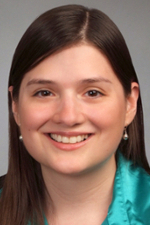
Monica E. Bianco, MD
The Impact of the Maternal Metabolome and Neonatal Genotype on Childhood Disorders of Glucose Metabolism
The prevalence of disorders of glucose metabolism including insulin resistance and type 2 diabetes in children is increasing, proportionate with the increasing prevalence of childhood obesity. Identifying children at risk for developing DGM and intervening prior to disease onset is critical. We will be investigating the association of maternal metabolites with development of childhood disorders of glucose metabolism. We will integrate metabolomics and genetics data together with clinical data to develop a predictive model for development of childhood disorders of glucose metabolism. The goal is to identify high-risk newborns and develop preventative interventions early.

Ryan A. Blaustein, PhD
Postdoctoral Fellow, Civil and Environmental Engineering, Northwestern University
Combined Effects of Chemotherapy and Antibiotics on the Intestinal Microbiome in Children
The human microbiome plays a critical role in gastrointestinal, immunological, and metabolic development and homeostasis. Children and adolescents receiving intensive cancer treatments are at an increased risk for developing health complications associated with microbiome dysbiosis (e.g., diabetes, asthma, obesity) and antibiotic-resistant invasive infections. To advance potential treatment strategies that mitigate such risks, our project aims to determine the impacts of chemotherapeutics and antibiotics on the gut microbiome in children using in vitro (synthetic community) and in vivo (murine) experimental systems. Using molecular biology and multi-omic methods, we will test the hypothesis that different forms of combination therapy may have overlapping and synergistic impacts on microbiome function and its potential resiliency post-treatment.
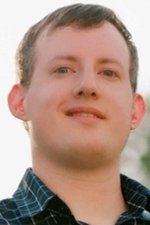
Jeffrey Calhoun, PhD
An integrative Approach to Identify Pathogenic Genomic Variants in Pediatric Epilepsy
Many pediatric epilepsy patients fail to receive a genetic diagnosis despite extensive genetic testing. We hypothesize that a significant portion of these patients harbor genetic variants missed by exon-focused sequencing technologies. To address this, we will perform genome sequencing and develop a computational framework to identify pathogenic coding variants and candidate non-coding variants to improve the genetic diagnosis of pediatric epilepsy.

Brian T. Burmeister, PhD
Senior Research Analyst at CMIC
Determining the Mechanism of Pediatric Doxorubicin-Induced Cardiotoxicity
Dr. Burmeister will be studying patient-specific responses to chemotherapy agents, specifically doxorubicin which is used to treat pediatric cancer patients. Doxorubicin is very effective in treating pediatric cancer, however one of the drug’s side effects, cardiotoxicity, limits it’s usefulness. As a result, Dr. Burmeister will be working to determine the molecular mechanisms that regulate doxorubicin-induced cardiotoxicity in order to identify new targets for drug discovery.
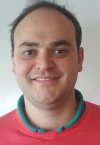
Matthieu K. Chardon, MS, PhD
Research Assistant Professor, Physiology, Northwestern University At Chicago
Computer-Controlled Pediatric Regional Anesthesia to Improve Patient Safety
Matthieu Chardon, PhD, will be developing a tool to measure the effectiveness of local anesthetic dosage in children with the goal of reducing dosage and increasing safety. “Regional anesthesia in pediatrics has dramatically increased over the past 30 years because it provides localized pain relief, diminishes opioid use and facilitates earlier mobilization, internal feeding and hospital discharge,” Dr. Chardon says. “It is also used frequently due to concerns about the effect of general anesthesia on brain development.” Nonetheless, Dr. Chardon explains that there are several concerns surrounding local anesthesia, and that there are no tools to determine its effectiveness or toxicity in real time. As a result, he is seeking to develop a solution in partnership with his mentors Santhanam Suresh, MD, Professor of Anesthesiology and Pediatrics, and Charles Heckman, MD, Professor of Physiology/Physical Medicine and Rehabilitation and Physical Therapy and Human Movement Sciences.

Bimal P. Chaudhari, MD, MPH
Assistant Professor, Pediatrics, Research Inst Nationwide Children's Hospital
Electronic Medical Record Integration of Genomic Testing Results
Bimal Chaudhari, MD, MPH, is developing a knowledge base that will deliver genomic testing results to non-geneticist clinicians via an electronic medical record. Many patients may benefit from genomic testing, but not all physicians feel prepared to take action based on the results of genetic testing. However, this new knowledge base will address this problem by offering clinical decision support that is patient specific and compatible with a physician’s workflow. “Right now, methods for DNA sequencing are fairly robust and well-developed but methods of sequence interpretation are evolving,” Dr. Chaudhari says. “The result is that, unlike an X-ray or blood culture, the interpretation of a sequencing test result can change over time. Results may also be more or less relevant at different points in time. The TL-1 program provides me the support I need to develop my knowledge base in this area and gain practical experience. I'm developing collaborations in fields I didn't even know existed a year ago. My hope is that this relatively novel collaboration is the foundation for sustained extra-mural research funding.”

Ashley Kraus, PhD
Postdoctoral Trainee
Determinants of Tobacco use and Barriers to Tobacco Cessation in Sexual and Gender Minority Adolescents
Sexual and gender minority (SGM) adolescents are at high risk for tobacco use. Tobacco use in SGM youth is problematic as it is associated with a higher risk of preventable cancers and ultimately heightened rates of morbidity and mortality. It is critical to understand precursors to, and intervene on, risk behaviors that often begin in adolescence and can ultimately lead to preventable cancer (e.g., tobacco use). Thus, my projects seek to identify determinants of tobacco use and barriers to tobacco cessation in SGM adolescents in order to ultimately inform a technology-based intervention to aid in tobacco-use prevention and cessation efforts in this population.

Daniel Giles Fort, MPH PhD
Director of Data Science/Biomedical Informatics Research at Ochsner Health System
Informatics Interventions to Accelerate Pediatric Clinical Trial Recruitment
Dan Fort, PhD, MPH, will be researching ways to use informatics in order to accelerate pediatric clinical trial recruitment. To do this, he will be looking at patterns in clinical trial recruitment success and failure as well as digging into historical cohort selection queries for insights into how they might be modified to increase the number of patients identified for recruitment. “This award is vital early career support, allowing me to build a solid body of investigatory, preliminary work for R-scale funding proposals as well as address important skill gaps in team and decision sciences,” said Dr. Fort.

Lajja Desai, MD
Pediatric Cardiology Fellow, Lurie Children's Hospital Of Chicago
Novel Non-Invasive cMRI Technique to Estimate Continuous Oxygen Saturations in Pediatric Heart Disease
Despite gains in survival, decreased quality of life and morbidity continue to be challenges in congenital heart disease (CHD). Until recently, blood oxygen content in the heart and central vessels (i.e., "oximetry") has only been measured by an invasive technology: catheterization. However, this technique does not take into account complex streaming effects in complex CHD. The course and extent of deoxygenated blood streaming likely contributes to poor tissue growth and abnormal neurodevelopment. Non-invasive data obtained with cardiac magnetic resonance imaging (cMRI) has improved surveillance capabilities in these children and adults. Lurie Children’s Hospital and Northwestern University are leaders in advanced cMRI. Our long-term goal is to establish an accurate, non-invasive and non-Gadolinium-contrast cMRI technique (T2 mapping) to estimate continuous oxygen saturations in the heart and vasculature.

Michael Dominick DiVito, PhD
Postdoctoral Fellow, Department of Surgery, Northwestern University
Differentiating Hepatocytes from iPSCs to Treat Pediatric Metabolic Liver Disease
Dr. DiVito will be studying ways to treat pediatric metabolic liver deficiencies using induced pluripotent (iPS) stem cells derived from liver cells. He plans to improve iPS cell differentiation protocols and to develop an infusion method for these cells with the overall goal of making both in vitro and living models of metabolic liver diseases that can be used to develop stem cell therapies and other treatments for these diseases. “I am excited at the potential of using stem cells with our lab’s bioreactor systems to develop disease models and cell therapies for pediatric metabolic diseases,” Dr. DiVito says. “With this award and the resources it offers, I feel I am in a great position to fulfill these goals. I am excited to see the output of this project after two years under the TL1 training program” Because the TL1 program promotes interdisciplinary mentorship, Dr. DiVito will be able to not only have the opportunity to enhance his engineering knowledge but also acquire new knowledge of hepatology, stem cell biology and other topics important to his research.
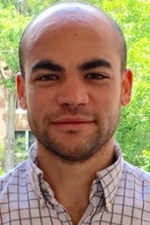
Adrian Figg, PhD
Gene Targeting and Controlled Release of Therapeutics using SNAs to Treat DIPG
Diffuse intrinsic pediatric glioma (DIPG) is an aggressive, malignant pediatric brain tumor. DIPG is a rare form of pediatric cancer affecting 200-300 patient annually, but is nearly uniformly fatal with a mean survival of only 18 months after diagnosis.1 Due to the tumor anatomic location within the brainstem coupled with its densely infiltrative nature, surgical removal is not possible. Additionally, chemotherapeutics that are effective for adult high-grade glioma, such as temozolomide (TMZ) treatment, are not effective for treating DIPG, while radiation therapy may temporarily alleviate symptoms but has no effect on overall survival. Dr. Figg's project aims to improve DIPG treatment targeting the H2K27M mutation using spherical nucleic acids (SNAs) as potent gene therapy and drug delivery vessels. Dr. Figg recently accepted a faculty position in the chemistry department at Virginia Tech University.

Martha Ingram, MD
Improving Data Capacity and Predictive Capability of NSQIP-P Using Design of Experiment Methodology
Dr. Ingram is applying novel industrial engineering and management science methodologies to assess quality outcomes for children undergoing surgery. The American College of Surgeons National Surgical Quality Improvement Project-Pediatric (NSQIP-P) is considered the premiere quality improvement program for children undergoing surgery. The biggest limitation to expanding this beneficial program is rooted in the burden of data collection. By using innovative engineering methodologies, Dr. Ingram and her mentoring team will reduce the data collection burden and expand the impact of the program.

Alicia Lenzen, MD
Assistant Professor, Department of Pediatrics, Hematology, Oncology, and Stem Cell Transplantation, Lurie Children's Hospital Of Chicago
A Novel siRNA Approach for Targeting Immunosuppresive IDO1 in Pediatric Brain Tumors
Alicia Lenzen, MD, will be studying a novel form of treatment for pediatric brain tumors that will use immunotherapy combined with nanotechnology. She will be researching the inflammation-induced expression of indoleamine 2,3 deoxygenase 1 (IDO1), its role in suppressing tumor immunity and therefore its promising therapeutic reactivation of the immune response against brain tumors. Dr. Lenzen will also integrate nanotechnology as a direct delivery mode into central nervous system tumors in order to create precise targeting. “This TL1 training will facilitate the building blocks of that research foundation now, obtaining findings related to the development of novel treatment regimens using mouse brain tumor models, with the possibility of direct translation into patients,” Dr. Lenzen says. “It will also allow me a look into multi-disciplinary work in order to create the best projects.”
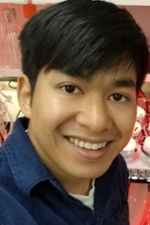
Siam Racharaks, PhD
Postdoctoral Trainee
Engineering a CRISPRi Phagemid System to Better Treat Infection in Young Children with Cystic Fibrosis
Cystic fibrosis (CF) is an autosomal recessive disease that affects approximately 30,000 people in the United States, of whom 75% were diagnosed by age 2. As a result of diminished lung function, roughly 50% of all people with CF have chronic Pseudomonas aeruginosa (Pa) infections which are associated with increased morbidity and mortality. To improve infection treatment in young children with CF, we propose the development of a novel phagemid-based therapy to combat Pa infections. Phagemids—synthetic plasmids packaged into a functional infectious phage particle—are highly specific and have unique characteristics which mitigate the release of endotoxins and prevent escape of progeny phages into the surrounding environment. To create an effective therapy, phagemids will be engineered to repress Pa genes involved in biofilm and antibiotic resistance development by utilizing CRISPR interference (CRISPRi) technology. The proposed studies will provide the foundation to design desperately needed new treatments for lung infections in children with CF.

Allison Letkiewicz, PhD
Postdoctoral Trainee
Inhibitory Control as a Transdiagnostic Correlate of Psychopathology in Youth
Mental health disorders are among the leading causes of disability among youth worldwide. Given that disorders co-occur more often than they occur independently, it is important that research examines potential transdiagnostic mechanisms that contribute to multiple forms of psychopathology. My project will test whether impaired inhibitory control, which is defined as the ability to override automatic or prepotent responses, is a transdiagnostic correlate of internalizing and externalizing psychopathology among youth using state-of-the art computational modeling and advanced neuroimaging methods. Advanced computational modeling holds the potential to quantify inhibitory processes with greater precision than traditional methods and neural network approaches can help to identify systems of coordinated neural circuitry that mediate specific components of inhibitory control. Ultimately, the goal of this work is to identify treatment targets and inform intervention approaches aimed at ameliorating multiple mental health conditions in youth.

Yen-Sheng Lin, MS, PhD
Assistant Professor, UT Southwestern
The Effects of tDCS on Abnormal Synergistic Coupling in Children with CP
Gait deviations in children with hemiplegic cerebral palsy are multifactorial including sagittal plane impairments at the ankle and knee combined with hip hiking and circumduction. These kinematic patterns are metabolically inefficient and may lead to significant musculoskeletal comorbidities, including joint diseases. While it has been proposed that weakness, spasticity and leg length discrepancy may contribute, the underlying factors remain unknown. We argue that these impairments may be a manifestation of aberrant motor coordination. The goal of this project is to construct a training paradigm to help shape the underlying motor sequence during gait in children with cerebral palsy with hemiparesis. The technique will leverage our understanding of the motor control of hemiparetic gait and neuromodulation for locomotor training.
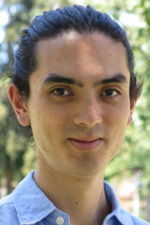
Ethan Johnson, PhD
Postdoctoral Trainee
Detecting cardiovascular abnormalities in pediatric bicuspid aortic valve patients using easy, low-cost chest vibration measurements
Cardiovascular abnormalities caused by bicuspid aortic valve, a congenital malformation, are associated with high risk of acquired valve disease and aortopathy. Patients with these conditions require regular clinical monitoring to ensure that disease progression is detected and managed appropriately, but this can entail tests such as diagnostic MRI, which are time- and cost-intensive and can be especially burdensome for pediatric patients. My project will explore the creation of an accessible, easy-to-use technology for detecting cardiovascular abnormalities through measurements of the physical vibrations on the chest’s surface of pediatric patients with aortic valve disease. In previous research using these measurements from adults, we have shown good performance for distinguishing healthy cardiovascular function from abnormal flow function associated with aortic valve disease. We will extend these promising findings to the pediatric population, who may benefit greatly from a low-cost and easy-to-use test that streamlines clinical care.

Natalie Roebuck, MD
Pediatrics Fellow, Northwestern University At Chicago
Dynamic Energy Balance in the ICU
Natalie Roebuck is studying and developing novel energy equations used to estimate calorie and fluid goals at the bedside in the ICU. Current equations can under- or over-estimate calorie goals in the pediatric ICU population by up 400 percent. This level of inaccuracy in energy balance leaves patients vulnerable to malnutrition, infection and prolonged mechanical ventilation. Along with collaborators in Applied Mathematics at Northwestern University, she will be developing and validating a novel equation to predict energy requirements in the pediatric ICU. She will validate this method in the Lurie Pediatric ICU and Pediatric Cardiac ICU while integrating dynamic physiologic data to improve our ability to account for dynamic energy change in critical illness. Natalie seeks to integrate clinical medicine with data science in order to gain usable knowledge at the bedside to improve care during pediatric critical illness.

Jake Winter
Predoctoral Trainee
Duchenne Muscular Dystrophy
Duchenne Muscular Dystrophy (DMD) is a devastating monogenic disease that affects ~1 in 3500 males. The disease is caused by mutations in the dystrophin gene that prevent production of the dystrophin protein and lead to progressive skeletal and cardiac muscle degeneration and ultimately death during the mid-twenties. A technique known as exon skipping has emerged as a promising treatment modality for a number of DMD cases that can circumvent disruptive mutations and restore the reading frame of the dystrophin gene to drastically improve the symptoms of the disease. While FDA approved drugs to accomplish exon skipping have recently been approved, they require repeated injections to achieve an effect and are extremely expensive. We have recently developed a gene editing platform termed CRISPR-SKIP that uses CRISPR-Cas9 single base editors to achieve permanent exon skipping by editing DNA directly. We have also developed a platform for delivering these gene editing tools using adeno-associated viral (AAV) vectors, which have proven to be a safe and effective vehicle for gene delivery. This project aims to couple these two advances to develop a one-time gene-editing treatment for DMD that will result in permanent exon skipping and lasting therapeutic benefit for the patient.

Alina Yu-Hsin Rwei, PhD
Assistant Professor of Chem Eng Chemical Engineering, Technische Universiteit Delft
Innovative Physiologic Recording Devices Skin Patch Sensors as a Substitute for Continuous Heart Rate and Blood Pressure Monitoring in the Neonatal Intensive Care Unit
Millions of premature infants worldwide suffer from infant respiratory distress syndrome, which could be fatal. It is important to be able to detect the vital signals, such as blood oxygenation, blood pressure and heart rate, in a safe and continuous manner. Current methods in the detection of neonatal blood flow are invasive, cumbersome and difficult to operate. In this project, I am developing a wearable, non-invasive skin patch for continuous monitoring of blood flow that could be mounted on the skin of neonates.

Suvai Gunasekaran, PhD
Postdoctoral Trainee
Non-contrast Fibrosis Quantification CMR Sequence
Tetralogy of Fallot (TOF) is the most common cyanotic heart condition in children. The most frequent and deadly complication in late childhood and young adulthood for TOF patients is ventricular tachycardia (VT), which is caused by myocardial fibrosis. The best treatment for VT is ablation, during which areas of fibrosis can be detected and ablated, but current methods are not robust. Prior studies have shown that pre-ablation assessment of myocardial fibrosis using cardiovascular MRI (CMR) improves procedural success for VT ablation. However, current CMR fibrosis imaging techniques require the use of a gadolinium contrast agent, which may have adverse health effects. Therefore, my project aims to develop a non-contrast fibrosis quantification CMR sequence using T1ρ mapping for measuring fibrosis in TOF patients.

Mark D. Struble, PhD
Peptide amphiphile nanofibers extend and enhance BMP4 function for improved therapeutic efficacy on pediatric high grade gliomas
Among pediatric brain tumors, high-grade gliomas are the most devastating. Therapeutic resistance in pediatric gliomas is primarily due to a population of glioma cells with stem-like features, referred to as glioma stem cells (GSCs). The growth factor bone morphogenetic protein 4 (BMP4) is known to promote GSC differentiation, which increases cell sensitivity to cytotoxic therapies. We hypothesize that BMP4 is a promising adjuvant for glioma treatment. However, due to the relatively short half-life of BMP4 in vivo, a delivery system needs to be developed for administering BMP4 in a clinical setting. We propose delivering BMP4 to the site of the glioma using peptide amphiphile (PA) nanostructures, which are known to extend the biological function of bound growth factors. The primary goal of this project is twofold: 1) to evaluate the clinical potential of a BMP4 nanostructure delivery platform for treating pediatric malignant glioma, and 2) create and test a new PA nanostructure containing relevant chemotherapeutic agents that can be used in combination with the BMP4 nanostructure.

Susan M. Slattery, MD
Instructor, Department of Pediatrics, Northwestern University
Process Vulnerabilities in Hospital Discharge after Neonatal Intensive Care Unit Stays
Dr. Slattery will be focusing her research on the timing of a safe transition home from the Neonatal Intensive Care Unit. Along with her mentors, she hopes to develop a valid, reliable predictive tool using data captured in the Electronic Health Record.

Melissa Pergande, PhD
Postdoctoral Trainee
Determining the Extent to Which Neurofilament Accumulation Causes GAN Pathogenesis and translation to a viable therapeutic option
Giant axonal neuropathy (GAN) is an autosomal recessive disorder which presents in childhood and results due to mutations in the gene encoding gigaxonin. Clinical manifestations include a clumsy gait and a loss of peripheral strength and sensation, with rapid escalation to cognitive defects, seizures, brainstem dysfunction and ultimately death. A major hallmark of GAN is the accumulation of neurofilaments (NFs). Previous studies have shown that NFs are degraded by the ubiquitin-proteasome pathway where an important aspect of this process is the targeting of NFs for degradation by ubiquitination via gigaxonin. We are using proteomics to dissect the role of GAN, which is an E3 ligase adaptor that degrades NFs and likely other proteins.

Abhineet “Monti” Sharma, MD
How Factors That Affect the Placenta Change Immune Cells in the Fetus
In utero exposure — exposures that occur while babies are inside their mothers — are known to affect postnatal outcomes. In the case of premature infants, in utero factors play a role in the development of diseases associated with prematurity. My work focuses on how factors that affect the placenta, such as inflammation, infection, and poor blood supply, change immune cells in the fetus. Since these immune cells survive and divide in various tissues after birth, it's possible that changes that occur in the placenta alter the postnatal function of certain immune cells in our body. To study this, our lab collects cord blood at the time of delivery and purifies specific immune cells. We then use computational biology methods to study what these cells are doing and what they are capable of.




